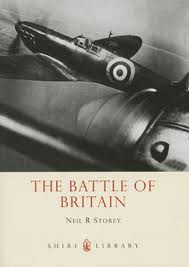 Like every boy who grew up in England, not too long after the war, I loved to read the boys comics: Beano, Dandy, Hotspur. Particulary Lion. The latter featured the weekly adventures of make-believe World War II RAF pilot, Paddy Payne. The Battle of Britain was recent history. Most boys of my age had a model aeroplane or two—carved from wood, of course—likely a Spitfire, or a Hurricane.
Like every boy who grew up in England, not too long after the war, I loved to read the boys comics: Beano, Dandy, Hotspur. Particulary Lion. The latter featured the weekly adventures of make-believe World War II RAF pilot, Paddy Payne. The Battle of Britain was recent history. Most boys of my age had a model aeroplane or two—carved from wood, of course—likely a Spitfire, or a Hurricane.
Paddy Payne, bless his heart, was the quintessential Battle of Britain pilot. (I would never have used the word quintessential, back then, of course). Paddy was smart and daring. Probably handsome. He was ‘sporting’ in the sense that the English use the word. In short: he was a decent fellow. A ‘good egg.’
The rotten Nazi pilots who tried to shoot him down used phrases like “Die, Englander pig-dog!” But when Paddy opened fire, emptying several hundred rounds from his Spitfire’s Brownings into the cockpit of some wretched Messerschmitt, he’d say something like “Cop that lot, chum!”
School-boy slang was de rigeur in the RAF of Battle of Britain days. Hardly a surprise, since many of the pilots had been at grammar school only a few years earlier, cramming for their Latin tests and roughing it up on the rugga pitch. A successful encounter with enemy planes was a ‘wizard show.’ One didn’t crash ones aeroplane; one ‘pranged ones kite.’ Crash-landing in the English Channel was ‘ditching in the drink.’ These, and phrases like them, were absorbed into the fledgling vocabularies of the readers of the Lion.
Of course, the Battle of Britain was not a ‘piece of cake’ or a series of ‘wizard shows’ but an historical event full of tension and high drama that spanned, roughly, July to the end of October 1940. The outcome altered world opinion—in America, in Britain, even in Germany and particularly in Hitler’s mind—as to how the war would now progress. That said, some of the pilots—for example RAF ace ‘Sailor’ Malan who is pictured above—showed some characteristics of the fictional Paddy Payne and became household names. [The South-African-born Malan usually went by his nickname of ‘Sailor’ rather than his given name, which was Adolph. He survived and returned home at the end of the war].
 To do justice to an event such as the Battle of Britain in a book (let alone a blog post) would be a daunting task. Remarkably, historian Neil R. Storey has written a fine and impressively concise book about the Battle of Britain, 50 pages, or thereabout, with numerous illustrations.
To do justice to an event such as the Battle of Britain in a book (let alone a blog post) would be a daunting task. Remarkably, historian Neil R. Storey has written a fine and impressively concise book about the Battle of Britain, 50 pages, or thereabout, with numerous illustrations.
Storey’s account details the various phases of the battle, beginning with the Luftwaffe settling into its newly captured airfields in France and other occupied countries (Phase 1) to sustained raids on British cities, mainly London and mainly at night (Phase 5).
This week in the war saw the start of Phase 3: attacks against RAF Fighter Command airfields in southeastern England. They began on 13 August, Eagle Day (Adlertag in German), when close to 500 hundred German bombers and twice as many fighters crossed the English coastline. Given the Luftwaffe’s battle experience and overwhelming strength, Goering expected the fight to be over in a matter of days. He had not anticipated the RAF’s level of organization, the effectiveness of Radar, and the quality of pilots and machines. Day after day, the Hurricanes and Spitfires of fighter command took to the skies and inflicted losses on the Luftwaffe often around 2 to 1, in comparison to their own.
